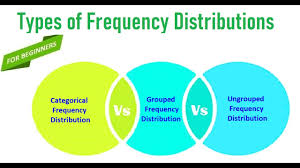Measurements or counting produce raw data, which on its own is challenging to interpret due to the lack of organization or summarization, rendering it less meaningful.
To make sense of this data, it is necessary to organize it through classification and tabulation, thus reducing its volume and heterogeneity.
For the purpose of describing situations, drawing conclusions, or making inferences, data must be organized in a meaningful way. The most convenient method to achieve this is through the construction of a frequency distribution.
What is a Frequency Distribution?
The organization of raw data in a tabular form using classes (or intervals) and frequencies is known as frequency distribution. Frequency refers to the number of occurrences of an element in a sample and is symbolized by “f.” Frequency distribution is a useful
method in agriculture to organize raw data, such as crop yields, livestock counts, or soil measurements, into tables that help reveal trends or patterns.
Read Also: Popular Breeds of Ruminant Animals
Types of Frequency Distribution Used in Agriculture

There are two common types of frequency distributions used in agricultural research:
1. Categorical Frequency Distribution: This type is useful for data that can be grouped into specific categories, such as nominal or ordinal-level data. It helps understand the proportion of values in each category, rather than focusing solely on frequencies.
For instance, in cattle farming, categories like coat color, polled or horned, or calf sex can be analyzed. The relative frequency of a category is calculated by dividing the frequency of occurrence by the total number of values.
Example: Mastitis Status in a Cattle Herd
In a herd of 50 cattle, the following data represents the mastitis status:
+ = Animal with mastitis
– = Animal without mastitis
N = Not tested
The data is grouped into three categories: Mastitis, No Mastitis, and Undecided.
| Class | Tally | Frequency | Percent |
|---|---|---|---|
| Mastitis | //// //// //// // | 17 | 34% |
| No Mastitis | //// //// //// //// //// | 24 | 48% |
| Undecided | //// //// | 9 | 18% |
In this example, the data shows that most of the cows did not have mastitis, as indicated by the highest frequency for “No Mastitis.”
2. Ungrouped Frequency Distribution: This type involves listing the figures as they appear in the raw data, along with their corresponding frequencies. It is often used when the dataset is relatively small, and each unique value is recorded along with how often it occurs.
Example: Egg Production in Birds
In a study, the number of eggs produced by 50 birds at 180 days of age was recorded as follows:
| Class Limits | Tally | Frequency | Cumulative Frequency | Relative Frequency (%) |
|---|---|---|---|---|
| 70 | / | 1 | 1 | 2% |
| 72 | //// | 4 | 5 | 8% |
| 73 | // | 2 | 7 | 4% |
| 74 | //// | 5 | 12 | 10% |
| 75 | //// | 5 | 17 | 10% |
| 76 | //// //// | 10 | 27 | 20% |
| 77 | //// //// | 10 | 37 | 20% |
| 78 | //// / | 6 | 43 | 12% |
| 79 | / | 1 | 44 | 2% |
| 80 | //// | 4 | 48 | 8% |
| 81 | // | 2 | 50 | 4% |
Grouped Frequency Distribution
A grouped frequency distribution is constructed by organizing data into intervals (or classes) and listing the frequency of values within each interval.
This method is particularly useful in agriculture when dealing with large datasets, such as yield measurements or animal weights.
Read Also: Description of Some Popular Goat Breeds
Rules for Constructing a Grouped Frequency Distribution in Agriculture

- The distribution should have at least 5 classes and not exceed 20.
- The class width should be an odd number for easy calculation of midpoints.
- Ensure that class limits do not overlap.
- Classes must be continuous, even if no values are present in a class.
- All data values must be accommodated within the classes.
- Equal class width should be maintained throughout the distribution.
Effect of Grouping in Agricultural Data
Grouping data allows patterns or trends to emerge from large datasets. However, it also results in some loss of information. Calculations made from grouped frequency distributions are approximate, and precision decreases slightly.
Despite this, grouped frequency distributions remain valuable in summarizing data, organizing it meaningfully, and aiding in the computation of averages or other statistical measures.
Reasons for Constructing Frequency Distributions in Agriculture
- To organize data in an intelligible manner.
- To identify the nature and shape of the data distribution.
- To simplify calculations related to averages and variations.
- To create charts or graphs for easier interpretation.
- To facilitate comparisons among different datasets.
Do you have any questions, suggestions, or contributions? If so, please feel free to use the comment box below to share your thoughts. We also encourage you to kindly share this information with others who might benefit from it. Since we can’t reach everyone at once, we truly appreciate your help in spreading the word. Thank you so much for your support and for sharing!

